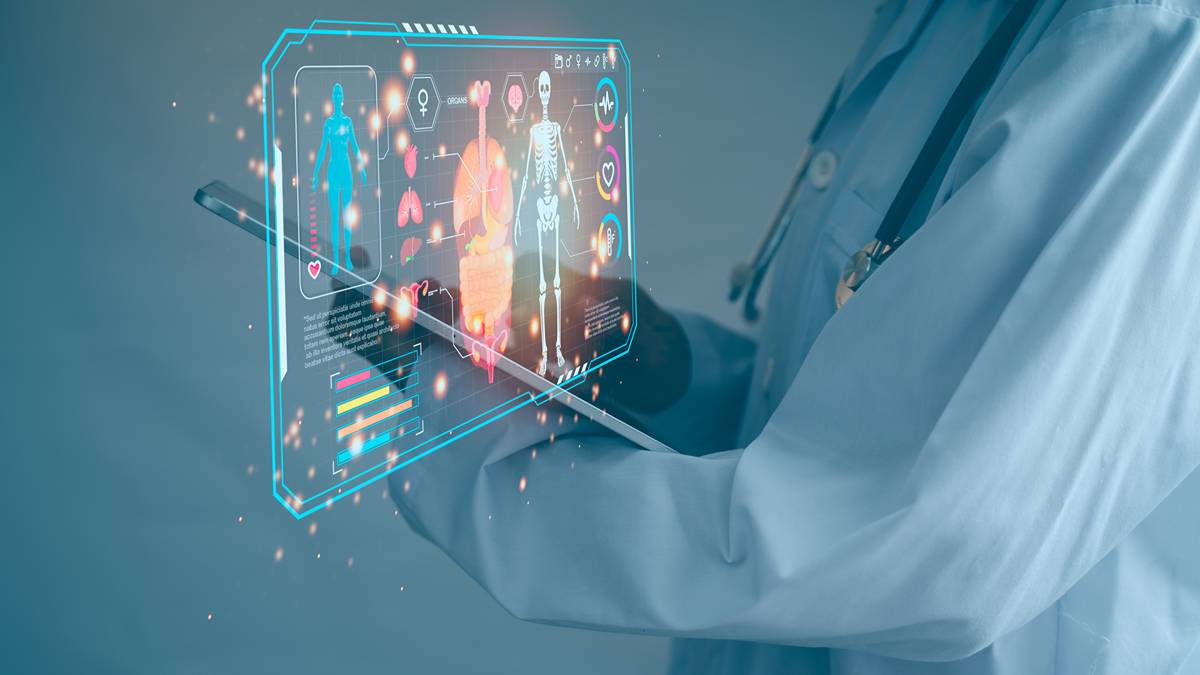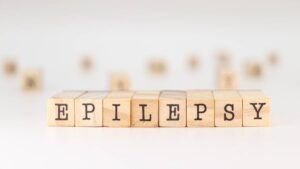Regenerative medicine is a new frontier for medical tech – and these ASX companies are at the forefront

At the forefront of healthcare innovation, regenerative medicine harnesses the body’s natural repair abilities. Pic: Getty Images
- Regenerative medicine is a fast-growing healthcare field that harnesses the body’s natural healing ability
- At Monash University, the Australian Regenerative Medicine Institute is internationally recognised for pioneering research
- Several ASX companies focus on regenerative medicine with innovative products now used in hospitals globally
Regenerative medicine has become one of the most exciting frontiers in healthcare, focused on repairing, replacing, or regenerating human cells, tissues, and even organs to restore normal function and harnessing the body’s own ability to heal itself.
Humans already have some natural regenerative abilities. The liver can regrow after injury, and skin continually renews itself.
Yet many organs and tissues can’t regenerate, and scientists are working to unlock that potential. Around the world, researchers are exploring ways to regrow entire organs and repair damaged nerves to restore function after paralysis.
Australia is playing a central role in this global effort. At Melbourne’s Monash University, the Australian Regenerative Medicine Institute (ARMI) is internationally recognised for pioneering research into how tissues form, repair and regenerate — from muscle and nerve to heart and blood.
By decoding the body’s own repair mechanisms, ARMI scientists are laying the groundwork for tomorrow’s therapies.
“Discovery is where regeneration begins and knowledge sets us on the path to new therapies,” says ARMI director Professor Peter Currie.
“Understanding how cells repair and rebuild themselves allows us to design smarter interventions — whether through biomaterials, stem cells or gene-based approaches.”
From fixing torn tendons to healing chronic wounds, the field is already delivering real clinical impact, and the future promises even more. On the ASX, several companies are turning the scientific principles of regenerative medicine into innovative products used in hospitals around the world.
Don’t be sheepish about tissue repair innovation
New Zealand based soft-tissue regeneration company Aroa Biosurgery (ASX:ARX) was founded in 2008 by veterinarian and now CEO Dr Brian Ward.
With an interest in regenerative medicine, Ward first researched suitable tissue alternatives after observing New Zealand’s pasture animals were largely free from disease.
Aroa’s source material for its soft-tissue repair products is ovine forestomach matrix (sheep rumen) sourced exclusively from New Zealand, which provides a scaffold, or framework, for new tissue to build.
The forestomach matrix is processed and sterilised to remove DNA and cells, leaving the tissue scaffold called the extracellular matrix (ECM).
The ECM has a dense network of vascular channels, a similar structure to human skin and contains more 150 proteins known to be important in the healing process.
Aroa’s ECM products, including Myriad and Endoform, provide a scaffold for new tissue growth, improving the rate and quality of healing in patients with challenging wounds.
Symphony, the company’s newest product, is designed for outpatient wound care, combining ECM with hyaluronic acid to keep wounds moist and aid healing.
Results from a 120-patient trial of Symphony in diabetic foot ulcers, is expected later this year.
Positive results could boost clinical evidence and help secure reimbursement for outpatient use in the U.S.
Aroa now has regulatory approval in more than 50 countries with its range of products used in more than seven million procedures to date.
The company surged into the black in FY25, delivering its first profit since listing on the ASX in 2020 with EBITDA profit of NZ$4.2 million.
“Aroa’s ECM technology really shortcuts the healing process, encouraging the tissue to grow back in a natural way, often in a single application with little to no complications,” Ward told Stockhead.
Expanding the frontiers of nerve repair
Perth-based based regenerative medicine company Orthocell (ASX:OCC) was born more than 15 years ago from a meeting of innovative minds, who saw the potential for biological solutions to repair the human body.
Co-founder and managing director Paul Anderson, a former orthopaedic nurse turned entrepreneur, partnered with Professor Ming Hao Zheng from The University of Western Australia to develop regenerative medicine technologies.
The duo had already commercialised a cartilage repair technology sold to a US company now valued at more than US$1B, and their success inspired the next breakthrough.
With venture capital backing and Western Australian government support, Orthocell built its labs, advanced its clinical programs, and listed on the ASX in 2014. It has since gone from strength to strength, emerging as a leading performer on the ASX in recent years.
Orthocell’s flagship product Remplir is a collagen wrap used in peripheral nerve repair, which has been approved in the US, Australia, New Zealand, Singapore, Thailand, Hong Kong and Canada.
Initially used by plastic and orthopaedic surgeons to repair and protect damaged nerves, the applications for Remplir are now expanding, including in prostate cancer surgery.
Even with advanced robotic tumour removal, around 80% of patients experience erectile dysfunction and 35% face incontinence, highlighting the need for improved nerve protection.
In Australia, surgeons have now used Remplir in around 40 prostatectomies to safeguard the delicate nerve bundles responsible for continence and erectile function, with initial patient data expected to be released in Q4 CY25.
Another standout application for Remplir has been its use in restoring movement and function to people who have experienced catastrophic spinal injuries.
Among Orthocell’s other products is Striate+, which is a sterile, resorbable collagen membrane designed for guided bone and tissue regeneration in dental procedures. The product is approved for sale in Brazil, the US, Europe, the UK, Australia, New Zealand, Canada and Singapore.
“Regenerative medicine represents a paradigm shift to a smarter, more targeted approach to medicine, pushing researchers and clinicians to create treatments which ultimately save time, resources and generate a better outcome for patients,” CEO and managing director Anderson told Stockhead.
Bali bombings’ medical legacy
Avita Medical (Nasdaq: RCEL, ASX: AVH) has emerged as a global leader in therapeutic acute wound care through its pioneering Recell System, a spray-on skin technology that harnesses a patient’s own skin cells to accelerate healing and reduce the need for grafts.
Developed by legendary Perth burns surgeon Professor Fiona Wood, the system was first used to treat victims of the 2002 Bali bombings and has since evolved into a platform used in leading hospitals worldwide.
“Our goal is to deliver predictable healing – the same wound, same patient, same doctor, same hospital – every time,” CEO Jim Corbett told Stockhead.
“That consistency is what makes Recell and our other therapeutics such a powerful platform for acute wound care.”
Recell has been approved by the US Food and Drug Administration (FDA) to treat thermal burn wounds, full-thickness skin defects, and for repigmentation of stable depigmented vitiligo lesions.
The next generation Recell Go device builds on the same spray-on skin concept, providing a more integrated system that supports physician-directed application and enhances procedural consistency..
Recell Go applies to burns covering up to 10% of total body surface area (TBSA), or up to 1920cm2.
Another iteration, Recell Go mini is for smaller burns up to 2.5% of TBSA, or up to 480cm2 and gained FDA pre-market approval in December 2024.
In the same month, Avita’s Cohealyx, a collagen-based dermal matrix that supports the body’s natural healing, received 510(k) clearance for treating a range of wounds.
Also, in Avita’s portfolio is PermeaDerm, an FDA-cleared biosynthetic wound matrix for partial-thickness, surgical, trauma, and donor site wounds.
PolyNovo targets better functional and cosmetic outcomes
Melbourne-based PolyNovo (ASX:PNV) is also focused on regenerative medicine with its patented bioabsorbable polymer technology NovoSorb BTM.
The synthetic, dermal scaffold is designed to support dermis regeneration after surgery, trauma, or burns, aiming to promote faster healing, reduces complications, and improve both functional and cosmetic outcomes.
NovoSorb BTM is approved for use in Australia, the US and European Union.
Built on the same tech platform as NovoSorb BTM – which includes a protective sealing membrane – NovoSorb MTX was launched in FY25.
Without the membrane NovoSorb MTX offers a solution for clinicians in cases where a protective top layer isn’t needed and has so far been approved in Australia, the US and India.
“NovoSorb BTM and MTX are reshaping surgical practice, with over 400 published articles and abstracts reinforcing their clinical value across a range of indications,” Chairman David Williams and acting CEO and managing director Dr Robyn Elliott said in their recent annual letter to shareholders.
“Clinicians continue to identify new patient applications for our technology in areas outside the burns market.
“This is reflected in the more than 40% increase in units sold in FY25 compared to FY24.”
Advancing nerve and soft tissue repair
Making its ASX debut on November 26 last year, ReNerve (ASX:RNV) develops biological scaffolds that support healing of nerves and soft tissue for peripheral nerve repair, replacement, and related surgeries.
ReNerve’s lead FDA-approved NervAlign nerve cuff protects nerves during the healing process following peripheral nerve injuries or repair surgery. The company is also developing a replacement nerve for nerve regeneration.
A comparative study showed that patients treated with NervAlign experienced significantly lower post-surgery pain than those repaired using standard of care.
ReNerve has also launched its Empliq product range in the US, targeting the lucrative dermal and amniotic tissue market.
Developed in partnership with US-based Berkeley Biologics, the Empliq range comprises four products that mimic the properties of human dermis, made from natural bioactive components including collagen, elastin, and glycosaminoglycans.
These products are designed for use in medical procedures alongside NervAlign, including soft tissue repair, reinforcement, and replacement.
“A key to nerve regeneration and re-establishing ‘back to normal’ nerve function is providing a protective environment for the nerve and an ideal environment for the nerves to regenerate and re-establish nerve function,” CEO Dr Julian Chick told Stockhead.
At Stockhead, we tell it like it is. While Aroa Biosurgery, Orthocell and ReNerve are Stockhead advertisers, the companies did not sponsor this article.
This article does not constitute financial product advice. You should consider obtaining independent advice before making any financial decisions.

UNLOCK INSIGHTS
Discover the untold stories of emerging ASX stocks.
Daily news and expert analysis, it's free to subscribe.
By proceeding, you confirm you understand that we handle personal information in accordance with our Privacy Policy.








